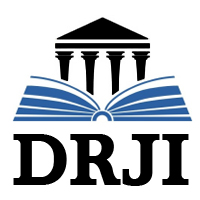1078
Views & Citations78
Likes & Shares
Aberrant jet streams and turbulent flow from
diseased cardiac valve causes direct endothelial injury, which triggers colonization
of the platelet-fibrin aggregates. Subsequent microbial growth and inflammatory
cell accumulation forms vegetations. In this case report, we show several
images with good quality supporting the important role of turbulent flow in
vegetation formation. A 57-year-old male was admitted because of fever, chills
and lower back pain for several weeks. Magnetic resonance imaging showed active
stage of infectious spondylitis with epidural enhancement at L3-4 level of
lumbar spine. Streptococcus viridans was identified in his blood
culture. Transthoracic echocardiography showed flail motion of posterior
leaflet of mitral valve with severe degree eccentric mitral regurgitation.
There were no visible vegetations in transthoracic echocardiography. Following transesophageal
echocardiography revealed echo-lucent materials spread out along with turbulent
flow from mitral regurgitation, strongly suggestive of vegetations. The patient
was stabilized after intravenous penicillin G treatment. At five week of admission,
he was discharged without events.
1. Werdan K, Dietz S, Löffler B, Niemann S, Bushnaq H, Silber RE,
Peters G, Müller-Werdan U. Mechanisms of infective endocarditis: pathogen-host
interaction and risk states. Nat Rev Cardiol 2014; 11:35.
QUICK LINKS
- SUBMIT MANUSCRIPT
- RECOMMEND THE JOURNAL
-
SUBSCRIBE FOR ALERTS
RELATED JOURNALS
- Journal of Otolaryngology and Neurotology Research(ISSN:2641-6956)
- Archive of Obstetrics Gynecology and Reproductive Medicine (ISSN:2640-2297)
- Journal of Ageing and Restorative Medicine (ISSN:2637-7403)
- International Journal of Radiography Imaging & Radiation Therapy (ISSN:2642-0392)
- Advance Research on Alzheimers and Parkinsons Disease
- Chemotherapy Research Journal (ISSN:2642-0236)
- Advance Research on Endocrinology and Metabolism (ISSN: 2689-8209)





